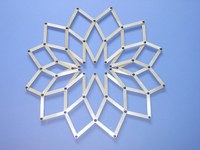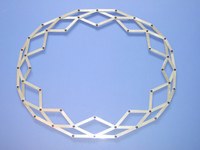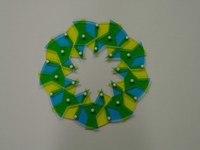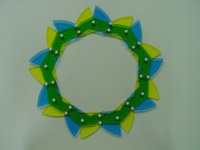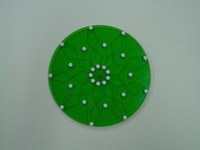Retractable Structures research undertaken by the Special Structures Group, Department of Engineering Science, University of Oxford

Retractable Structures
Future civil engineering projects involve the use of intelligent structures: a structural system whose geometric and inherent structural characteristics can be changed beneficially to meet practical requirements. From the viewpoint of structural engineering, a key element in this development is to develop robust structural concepts which provide for the capability to change configuration, i. e. structures able to produce different working geometries and also able to move from one configuration t o another.
Mechanism design has always been a challenge to engineers. The problem can be stated as follows: "to find a mechanism topology which can produce a desired output movement for a given input movement." Usually, one relies on previous experience or on a CAD package, with a consisting of many different mechanism topologies from which a candidate mechanism can be selected and then proportioned to produce the desired motion. This approach cannot be applied to the design of structural mechanisms as it tends to produce impractically complex linkages whose joints are not suitable to carry loads included in large structural applications. In many cases, this approach simply does not work if the problem is overconstrained, as the geometric constraints are non-linear and their number is too high. The multi-configuration requirements of intelligent structures add a further degree of difficulty.
In our current research, we have used an approach different from the one described above. We started with geometric compatibility equations of a chosen set of mechanisms and simplified them by using symmetry to reduce the size of the problem, then we made some assumptions to reduce the number of design parameters, and finally obtained a class of generic solutions. This approach worked extremely well in discovering a number of different mechanisms, which are shown in next few sections, and gave us some insights into geometry of mechanisms.
